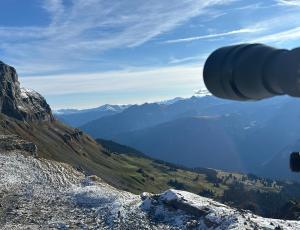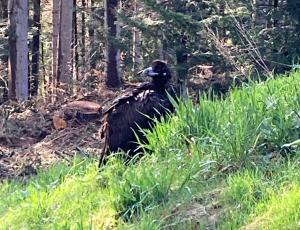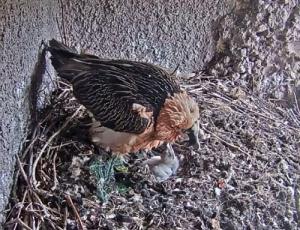Were the Neanderthals bearded vulture fans?
The bearded vulture is the largest breeding bird in the Alpine region. Its wingspan of nearly three meters and its extraordinary plumage leave a deep impression on most people who are lucky enough to encounter a bearded vulture in the wild. Research suggests that even the Neanderthals were fascinated by this unique glider. It may even have had some significance in their culture.
Machining traces of Neanderthals in bearded vulture bones
It seems that bearded vultures have captivated humans since time immemorial. As a paper by a research group led by Italian anthropologist Marco Peresani suggests, Neanderthals were already fascinated by large birds of prey. The researchers found bones of 22 different bird species from very different habitats in a cave in northern Italy not far from Verona (Grotta di Fumane). When analyzing them, the researchers noticed that in some species the wing bones were specially worked. Among the bones was also found an ulna (part of the forearm) of a bearded vulture. The arrangement of incisions or scratch marks made by tools made from stones suggests that humans cut off the muscles as well as removed the skin to detach the feathers.
Bearded vulture feathers a part of Neander culture?
The clearly human traces indicating molting and plucking could be related to food processing. However, it is striking that the traces were found mainly on bones with low meat content. This suggests that Neanderthals had a certain interest in the wings and especially the feathers of bearded vultures and other selected bird species, and that these may have had important symbolic meaning for them.
Literature
Marco Peresani, Ivana Fiore, Monica Gala, Matteo Romandini, Antonio Tagliacozzo (2011): Late Neandertals and the intentional removal of feathers as evidenced from bird bone taphonomy at Fumane Cave 44 ky B.P., Italy. Proceedings of the National Academy of Sciences Mar 2011, 108 (10) 3888-3893; DOI: 10.1073/pnas.1016212108









